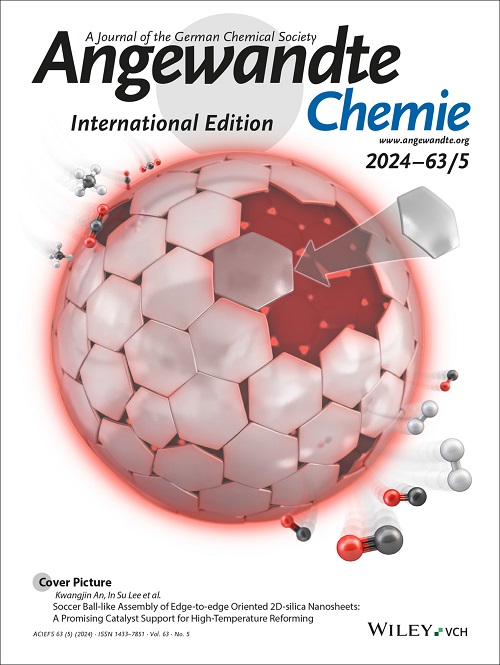Direct Access to Functional 2-Azabicyclo[2.1.1]hexanes via Hydrodearomative [2π + 2σ] Cycloaddition of Aza-arenes
IF 16.1
1区 化学
Q1 CHEMISTRY, MULTIDISCIPLINARY
引用次数: 0
Abstract
Converting planar six-membered aza-arenes into C(sp3)-rich three-dimensional (3D) scaffolds is a promising way to obtain isosteric mimetics of numerous functional products, but it remains to date a formidable challenge due to the high thermodynamic stability and dynamic inertness as well as the selectivity control. Here, by applying a novel non-noble bimetallic Mn/Fe catalyst system, we report, for the first time, an approach for direct construction of functional 3D 2-azabicyclo[2.1.1]hexanes via a hydrodearomatization (HDA) of the aza-arenes and [2π + 2σ] cycloaddition cascade. Mechanistic investigations reveal that the triplet state of Fe(II) facilitates the activation of both aza-arenes and bicyclo[1.1.0]butanes (BCBs). The mild reduction nature of manganese catalysis and the steric effects of Fe(II) coordination result in an 1,4-hydrodearomatization, and the imine species derived from the isomerization of 1,4-hydrogenated aza-arenes are then effectively trapped by the polarized BCBs, thus suppressing the thermodynamically favorable over-hydrogenation of aza-arenes into cyclic amine by-products. Given the features of good substrate and functionality compatibility, high step and atom efficiency, and diversified product post-transformations, the developed chemistry offers a practical platform to access various functional molecules.求助全文
约1分钟内获得全文
求助全文
来源期刊
CiteScore
26.60
自引率
6.60%
发文量
3549
审稿时长
1.5 months
期刊介绍:
Angewandte Chemie, a journal of the German Chemical Society (GDCh), maintains a leading position among scholarly journals in general chemistry with an impressive Impact Factor of 16.6 (2022 Journal Citation Reports, Clarivate, 2023). Published weekly in a reader-friendly format, it features new articles almost every day. Established in 1887, Angewandte Chemie is a prominent chemistry journal, offering a dynamic blend of Review-type articles, Highlights, Communications, and Research Articles on a weekly basis, making it unique in the field.

 求助内容:
求助内容: 应助结果提醒方式:
应助结果提醒方式:


